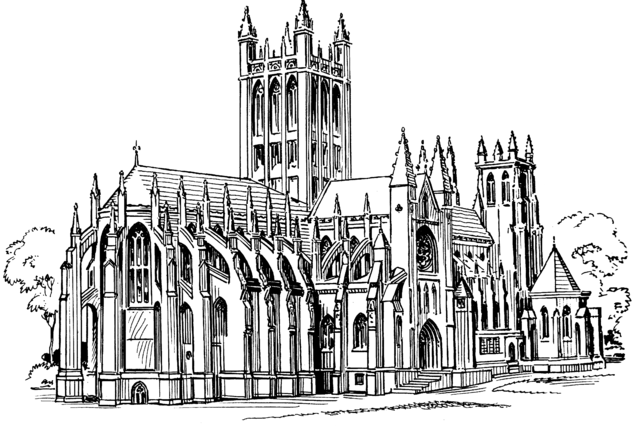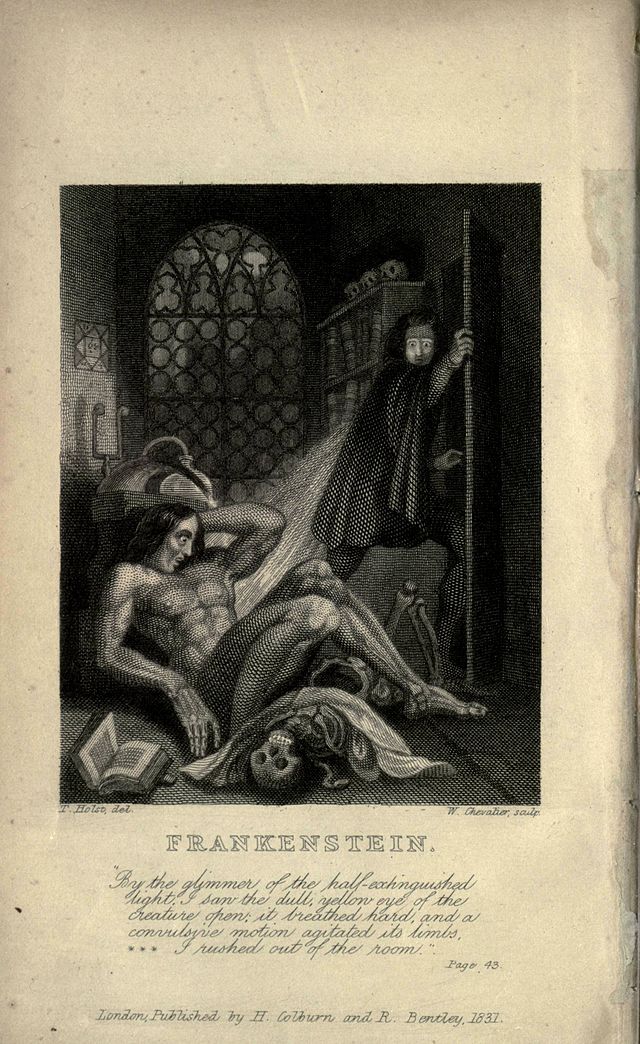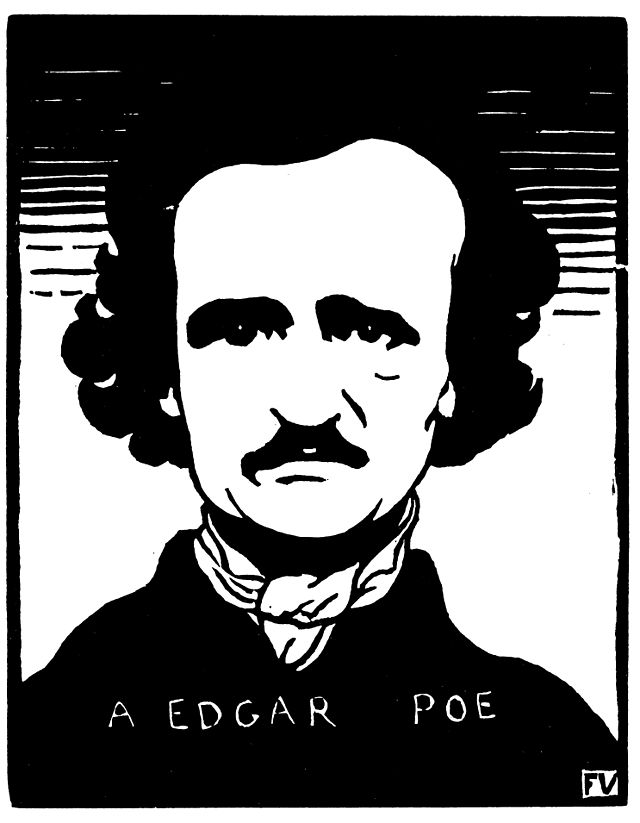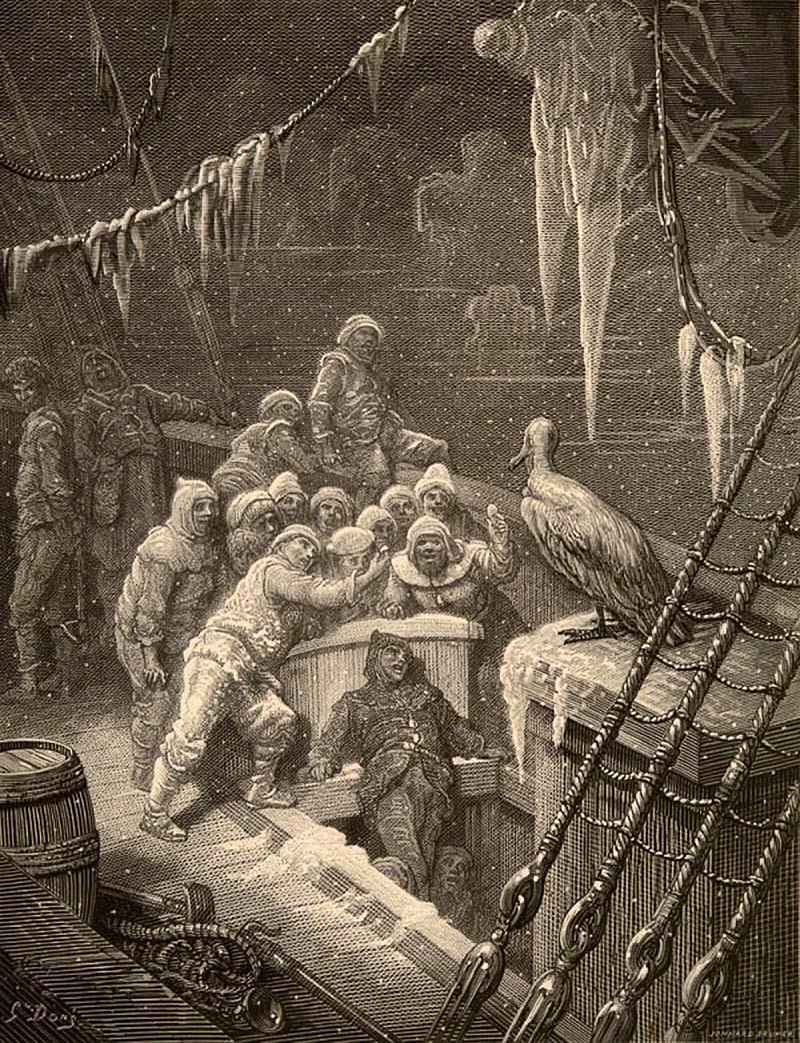The nine best Gothic writers are Radcliffe, Shelley, Brontë, Wilde, Dickens, Poe, Rossetti, Coleridge, and Byron. If you seek a greater understanding of the tropes of this genre, these writers are the place to start. If you find pleasure in the haunted, and the macabre, then these titans are sure to thrill and delight.
Gothic literature refers to writing that includes a frightening element, often arising from the paranormal. The term Gothic is actually a reference to a style of architecture which featured in many of the early Gothic tales. Gothic architecture is defined by the presence of the pointed or ogival arch (which is seen in the pointed interior roof), and a lot of verticle lines on the outside. It’s a style that was popular in the Middle Ages, and a lot of old castles were built in this fashion.
So if you’re reading a slightly scary story and there’s some imposing ancient architecture, you’re likely in the genre of the Gothic. One final element that defines the Gothic is a pervasive haunting of the present by the past: the castles in this way serve as a reminder of past violences, as do other ancient relics, manuscripts, and anything that draws your mind into a consideration of the days of yore.

The 5 Best Gothic Novelists of All Time
The 5 best Gothic novelists of all time are Ann Radcliffe, Mary Shelley, Emily Brontë, Oscar Wilde, and Charles Dickens.
Ann Radcliffe may comfortably be referred to as the Queen of the Gothic novel. More than that, she brought respectability to the Gothic form, and may well have been the most popular novelist of her day in Britain.
She was writing in late 18th Century, which is early for a female writer to have garnerned from critics such laurels as the ‘mighty enchantress’ and ‘Shakespeare of Romance.’ Unfortunately Radcliffe is another female writer who felt she needed to publish anonymously to achieve success: eventually, she earned so much money from her novels that her husband was able to quit his job.

She published five novels in her life which she always referred to as romances although they featured all the hallmarks of the Gothic. Her novels are famous for the inclusion of spooky elements which have naturalistic explanations by the novel’s end.
Her first two novels did not attract very much attention: The Castles of Athlin and Dubnayne, and A Sicilian Romance.
Her third novel, The Romance of the Forest, did a little better. It was her fourth and fifth novels which took off like a couple of rockets. She was paid five hundred pounds for The Mysteries of Udolpho, and eight hundred for her final novel The Italian which made her the highest paid novelist of the 1790s.
She wrong strong female characters, who were the equal of their male counterparts.
Mary Shelley’s most famous work is Frankenstein, which may have been written as part of a bet: the story goes in 1816, and an eighteen year old, she entered a wager with her husband P.B. Shelley and Lord Byron to see who could write the best spooky story. She won with the tale of a scientist who creates life, and is horrified by this act and haunted to the end of his days.

While clearly a Gothic tale, due to its terrifying subject matter, setting, and haunted themes Shelley also draws on the genres of the historical novel and the Godwinian novel. She challenged the rationalist and Enligtenment notions that science would march humanity unerringly toward progress, with the reality of the meaninglessness of scientific advancement devoid of morality.
Emily Brontë’s Wuthering Heights showcases many elements of the Gothic: its a terrifying tale set in a spooky place, where social boundaries are crossed, men destroy the women they pursue, and patriarchal hierarchies are challenged. There’s revenge and ghosts and all the good stuff. Wuthering Heights is a great example of classic literature which borrows from the Gothic without self consciously trotting out every single trope: we can see the debt that many classics owe to the Gothic form.
Image: Panapp

Key: black line: son or daughter of; if dotted it means adoption.
Red line: wedding; if double it means second wedding.
Pink line: love.
Blue line: affection.
Green line: hate light.
Yellow area: plot-driving characters.
Violet area: external observers.
Oscar Wilde’s late Victorian Gothic masterpiece The Picture of Dorian Gray is an astonishgly arresting novel featuring Wilde’s trademark wit and witticisms such as “there is only one thing in the world worse than being talked about, and that is not being talked about.”
This novel features a portrait, locked away in an attic, which ages while the one time sitter remains young and virbrant. This spooky tale features the supernatural, and is infused with a sense of terror about a past that will not fade away into irrelevance. One of the best Gothic inflected works in the canon.
Charles Dickens incorporated many Gothic scenes into his novels, most famously in the character of Miss Havisham, a jilted bride who still wears her wedding dress everyday. She lives in a ruined castle of sorts, and is terrifyingly haunted by the past. Spooky moments crop up quite regularly in Dickens’ work: he was an author who knew how to borrow most effectively from the Gothic.
The 4 Best Gothic Poets of All Time
The four best Gothic poets are Poe, Rossetti, Coleridge, and Byron. Gothic poetry is category that is not as well established as Gothic fiction, nevertheless Gothic influences permeate poetry composed contemporaneously with the height of the Gothic movement, and much poetry today retains hints of these influences.
Edgar Allan Poe’s writing mostly sits neatly in the Gothic Horror genre, featuring death, reanimation, decomposition, and always inner turmoil and hauntedness. He’s one of the earliest short story writers, and also credited with perhaps initiating the detective genre, as well as making serious contributions to the emerging genre of science fiction. Check out his poem The Raven, which is undoubtedly one of the most famous poetic works of all time, although it didn’t make him very much money during his life unfortuantely.

Christina Rossetti was a towering figure in the poetry world, and hailed as the successor of Elizabeth Barret Browning after the latter passed away in 1861. Rossetti’s Goblin Market and Other Poems set the literary world on fire, and was instantly popular from its date of first publication. Rossetti began her literary career borrowing from her favourite genres, and the Gothic influence on her work remains in her most celebrated poems.
Samuel Taylor Coleridge wrote poems which have become inseperable from the genre of the Gothic. Mary Shelley actually mentions The Rime of the Ancient Mariner several times in Frankenstein. In this poem the characters are terrifyingly haunted by a prior misdeed, gesturing to the Gothic trope of the past which resurfaces. Other poems by Coleridge which bear the unmistakable marks of the Gothic include Christabel and Kubla Khan. Christabel, an unfinished work which builds to a spooky reveal about the hidden potential for menace was influential on Poe particularly in his work The Sleeper.

Lord Byron was no stranger to the Gothic story: it was he and Mary Shelley’s husband P.B. Shelley that entered into the spooky three way writing contest which led Mary to write Frankenstein. Byron himself went on to publish The Prisoner of Chillon and Other Poems, and a verse drama by the name of Manfred. These works also display the thematic preoccupations discussed above, and are the best entry point for readers of Byron also drawn to the dark and forbidding.
Conclusion
Amongst the best Gothic writers of all time are the literary titans Radcliffe, Shelley, Brontë, Wilde, Dickens, Poe, Rossetti, Coleridge, and Byron. Jump into their work if you enjoy being spooked, or if sublime terror is the stimulant that sparks your joy. We hope that there is something of interest here for you, whether you enjoy fiction or poetry!

